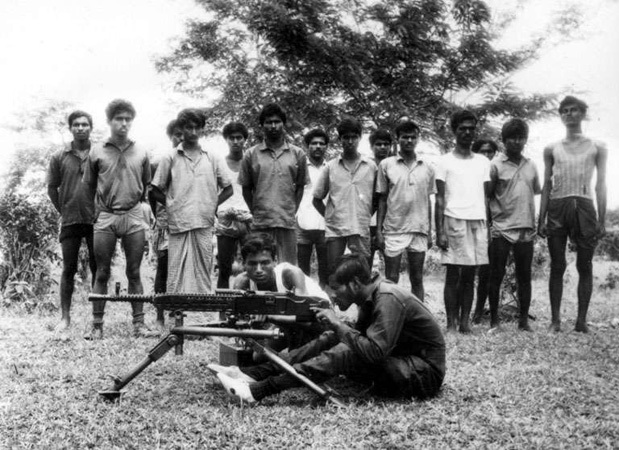An examination of the historical and political circumstances that led to the proclamation of Bangladesh’s independence from Pakistan
The declaration of Bangladesh’s independence remains controversial, partly because documentation is inconclusive. An earlier official proclamation came to light after a later one; while the later one is more firmly documented, the less firmly documented one is more densely embedded in the national movement before 1971. All this and more creates a documentation problem for the retrospective assignment of an exact date and original author for the Independence Declaration.
The bare facts are these: On April 10, 1971, the Provisional Government of Bangladesh at Mujibnagar proclaimed independence by confirming an earlier declaration, issued on March 26, by Sheikh Mujibur Rahman; on March 27, Major Ziaur Rahman of the East Bengal Regiment declared independence on radio from Swadhin Bangla Betarkendra, in Kalurghat, Chittagong.
At the time, these statements did not appear as being competitive, nor did they express partisan opposition. Both emerged in a complex political history that included numerous other declarations of independence, in various idioms, whose implications remain intriguing subjects for research, debate and interpretation.
Later in the 1970s, however, politics in Bangladesh produced starkly opposed attachments to declarations by Sheikh Mujibur Rahman and then General Ziaur Rahman, respectively. Ever since, the question of who declared independence has been trapped in partisan agendas that demand a choice between two dates, two declarations, and two authors; each associated, respectively, with one of two political parties, each of which reveres one of these two men as its founding father.
It remains the historian’s task to use all available documentation to compose a scholarly understanding of these declarations in the context of their time and place. This entails creative intellectual work, which William Appleman Williams described nicely in The Contours of American History (New York: Norton, 1988, pages 19-20):
“History is a way of learning… The historical experience is not one of staying in the present and looking back. Rather it is one of going back into the past and returning to the present with a wider and more intense consciousness of the restrictions of our former outlook. We return with a broader awareness of the alternatives open to us and armed with a sharper perceptiveness with which to make our choices. In this manner it is possible to loosen the clutch of the dead hand of the past and transform it into a living tool for the present and future.”
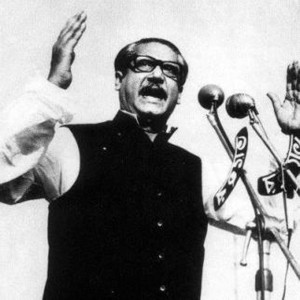
Historians with a very long-term view of the past that provides one kind of context for 1971 would emphasize that people in the land that became Bangladesh had declared independence many times, in many idioms, over the centuries. Political theorists and historians would also point out that even in the 20th century, the term “independence” has not been used only to mean national state sovereignty. Historically, proclamations of independence have taken many forms, each appropriate in its own setting. And so they did in the land that became Bangladesh until in March 1971, when the idea of independence acquired a new context, which never existed before and gave proclamations of independence new meaning.
Thus, when reconstructing the context of 1971, we should avoid temptations to infuse its textual evidence with interpretative interpolations from later times. At that time, declarations of independence could hark back to a remembered past, but could only imagine a future that existed then only as imagination, not as cultural, social, and political context, shaping the meaning of contemporary words and deeds.
The area that became Bangladesh attained a definite political identity in 1905, with a hotly controversial partition of the Bengal Presidency, which remained in force until 1911. The legacy of those six years remains today in the Bangladesh national anthem, extracted from a song composed by Rabindranath Tagore in 1906. When freedom fighters sang “Amar Sonar Bangla” in 1971, the poet’s original words had entirely different meanings than they did in the context of 1906.
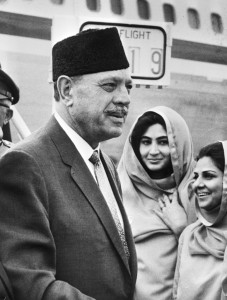
Tagore sang lovingly about a Bengal that suffered partition; but in 1971, fervent choruses of “Joy Bangla” and “Amar Sonar Bangla” rang out together to evoke the beauty and strength of another Bengal, a new Bengal, which Tagore never knew, whose people fought for freedom from Pakistan.
After 1905, political movements that would make Bangladesh independent gained force each decade. Voters in areas that became Bangladesh consistently declared their independence in elections. In 1921, they rejected the Indian National Congress by supporting C.R. Das’ Swarajya Party. In 1937, they rejected the Congress to support A.K. Fazlul Huq’s Krishak Praja Party, which, in 1941, joined Muhammad Ali Jinnah’s Pakistan movement. In 1946, they supported the Muslim League. In 1947, in the only referendum ever held specifically to choose between India and Pakistan, Sylhet voters chose Pakistan over India.
After 1947, in the context of Pakistan, an old independent spirit took new forms, inside entirely new political boundaries and institutions. A new national identity emerged in East Pakistan. In the early 1950s, the Bengali Language Movement became the first major public articulation of a new nation, which acquired explicitly political aspirations in the 1960s, when two distinct visions emerged of what a future imagined as “independence” meant in contemporary political practice.
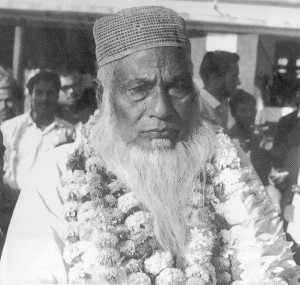
One vision resembled that of the Muslim League before 1941 and sought political autonomy and self-rule for East Pakistan, inside Pakistan. This constitutional vision of independence emerged in the halls of electoral politics and prescribed East Pakistan’s autonomy within a federal Pakistan constitution, which proponents of this vision sought to create to free East Pakistan from domination by West Pakistan.
Another vision emerged outside constitutional politics, most emphatically among students. It resembled the vision of radicals in India who demanded freedom from British India as early as 1905. It also resembled the vision of the Muslim League after 1941, when calls for independence invoked the “two-nation theory”. This popular vision of independence prescribed national sovereignty for the new Bengali nation that came into being in East Pakistan.
These two political visions of independence – federation and sovereignty – had separate origins and thrived in different circles. Yet they informed one another and always overlapped in the context of Pakistan, as they had in the context of British India. In 1952, students led the Language Movement and established a popular base for Bengali politics outside constitutionalism. In 1954, voters again voiced their independent spirit by supporting the United Front, which demolished the Muslim League in the East Bengal elections and framed a 21-point blueprint for regional autonomy.
When the new 1956 Pakistan Constitution rejected the idea of autonomy, Awami League president Abdul Hamid Khan Bhashani said that if East Pakistan’s grievances were not addressed adequately, Pakistan would become untenable for Bengalis. In 1962, after four years of military rule, following Ayub Khan’s 1958 coup, a clandestine group of students, called the Bengal Liberation Force, was formed to develop the idea of a Bengali national revolution. Thus by 1962 the two visions of independence had taken political form and overlapped to some extent.
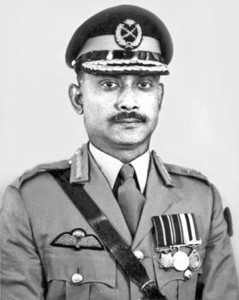
In the 1960s, economic disparities between East and West increased, and the idea that Pakistan consisted of two economies and two polities arose among East Pakistan intellectuals, who formed an expansive, influential circle for the interaction of the two visions of independence. The combination of the Language Movement’s Bengali cultural nationalism with a 1960s critique of Pakistan’s political economy composed a virtual “two-nation theory” inside Pakistan. The 1965 war between India and Pakistan dramatized East Pakistan’s military vulnerability compared to West Pakistan. In order to address disparities between East and West Pakistan, Awami League president Sheikh Mujibur Rahman announced a six-point program in 1966, demanding that East and West Pakistan form a federated state.
In 1967, Ayub Khan’s government responded by implicating Sheikh Mujibur Rahman and 34 others in an alleged conspiracy to make East Pakistan independent through an armed uprising. As a result of the Agartala Conspiracy Case (State vs Sheikh Mujibur Rahman and Others), Sheikh Mujib spent almost three years in jail, from May 8, 1966 to January 22, 1969.
During this time, a mass popular movement arose against the Agartala Conspiracy Case and the Ayub Khan regime. In 1968, Left politicians and students published a Program for [the] Independent Republic of Purba Bangla, and raised the slogan, “Establish Independent Republic of Purba Bangla”. Jailing the constitutional leadership had opened up political space for public demands for sovereignty, which added new force to federal demands.
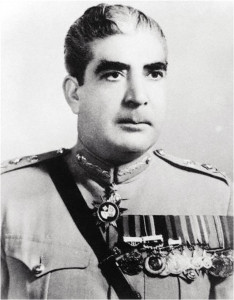
In 1969, a new popular movement led by student organizations combined calls for federalism with passionate assertions of Bengali nationalism. On January 4, the new Sarbadaliya Chhatra Sangram Parishad (All Parties Student Resistance Council, or SCSP) announced an 11-point charter for self-government in East Pakistan, and evoked freedom with slogans such as “Awake, Awake Bengalis, Awake”, “Brave Bengalis, take up arms and make Bangladesh independent”, “Your Desh, My Desh, Bangla Desh, Bangla Desh”. Cries of “Joy Bangla” appeared in public instead of “Pakistan Zindabad”.
On January 22, 1969, the popular uprising forced Ayub Khan to withdraw the Agartala Conspiracy Case and to release Sheikh Mujibur Rahman. On February 22, the SCSP held a huge rally to honor Sheikh Mujib, at Ramna Race Course, in Dhaka, with Tofael Ahmed, an SCSP leader, presiding. Tofael Ahmed proposed that Sheikh Mujib be adorned with the nationalist title, Bangabandhu. That met with rousing endorsement from the crowd. Cries of “Joy Bangla” came from all corners of the Ramna Race Course and appeared prominently in media coverage.
From that day onwards, Sheikh Mujib’s charisma and authority ascended with the public activity of students whose vision of independence was not the same as his, but gave his strength, as his gave their’s hope and legitimacy. Bangabandhu could thus pursue his constitutional vision with faith in popular support. On March 10, 1969, he presented the Awami League’s Six-Point federation plan at a Rawalpindi Round Table Conference, where West Pakistan politicians rejected it as a plan to dismember Pakistan. Thus, by 1969, the two visions of independence in East Pakistan had clearly become indistinguishable in West Pakistan, and probably had been by 1966, if not 1954. By 1969, Bangabandhu Sheikh Mujib symbolized both, though he himself pursued the constitutional vision.
On March 25, 1969, Ayub Khan resigned. General Yahya Khan imposed martial law. On November 28, Yahya Khan decreed elections to be held the next year. On the basis of the principle of one person, one vote, East Pakistan received 162 of the 300 general seats and five indirectly elected female seats in the unicameral National Assembly. East Pakistan politics then entered its climactic phase and the two visions became inextricably entangled.
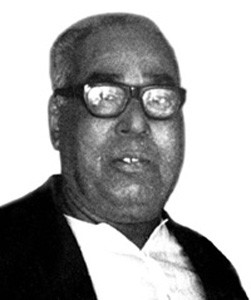
On October 28, 1970, Sheikh Mujib detailed his federal scheme in an election speech on Radio Pakistan, inviting voters in Pakistan to help him frame a federal constitution. Natural calamity once again dramatized the disparities between the East and the West, as war had done, in 1965. The result was more vociferous demands for independence in the East.
On November 12, 1970, a huge cyclone devastated East Pakistan’s coastal districts, and victims received little help from the government. On November 23, Maulana Bhashani declared, at a mass meeting on Dhaka’s Paltan Maidan, that past events and current government indifference to the cyclone victims proved Pakistan had by then become anachronistic and pointless. He ended his speech saying, “East Pakistan Zindabad”.
Three days later, in a press conference on his return from cyclone-devastated areas, Sheikh Mujib declared that the government’s failure to help cyclone victims represented a failure of Pakistan more than of Yahya Khan’s regime, and he concluded: “East Pakistan must achieve self-rule by ballot if possible, and by bullet, if necessary.” A week later, on December 4, the Students League demanded the release of political prisoners and raised two new slogans: “Peasants and workers: take up arms to make Bangladesh independent!” and “Raise a Ganabahini (People’s Force) to make Bangladesh independent!”
Thus by the time of elections on December 7 and 17, 1970, the two visions of independence were closely entangled in the minds of many people in East and West Pakistan alike. Yet they were not the same, and not united, politically. The Awami League’s election victory officially represented mass support for the six-point federalism. The Awami League won 288 of the 300 seats in the East Pakistan legislature and 167 of the 300 seats in the National Assembly.
On January 3, 1971, constitutionalism returned to the original site of its popular appeal, the Ramna Race Course, where Sheikh Mujib led a meeting of all the elected East Pakistan representatives, who swore an oath to implement the Awami League’s six-point program and the SCSP’s 11-point charter, both considered as the people’s trust, vested in East Pakistan’s elected government officials.
Today, in retrospect, we can see that the events in February and early March 1971 ended any realistic possibility for a federated Pakistan. But this was not obvious then and most certainly not obvious to Sheikh Mujib, who stood by his federation plan, on firm ground established by his constitutional principles, election mandate, and popular support. He stood on the threshold of becoming the Prime Minister of Pakistan. Thus, he had reason to be hopeful, but new shocks soon arrived.
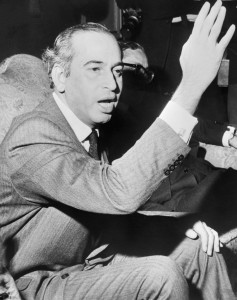
On February 15, 1971, two days after Yahya Khan announced that the National Assembly would meet in Dhaka on March 3, Zulfikar Ali Bhutto declared that his party could not join the Assembly until negotiations removed problems posed by the Awami League’s six-point program. On February 21, Sheikh Mujib stood at the Shahid Minar, in Dhaka, the symbol of Language Movement martyrdom, to restate his commitment to federalism based on the six points. He also declared that Bengalis must prepare to respond to any plot against their rights and interests. The next day, the plot appeared: Yahya Khan dissolved his Cabinet, convened a meeting of his generals, and resolved to solve the crisis his own way.
Two days later, on February 24, 1971, Sheikh Mujib called a press conference to declare that the people of East Pakistan would fight to safeguard their democratic rights and to establish self-rule. On February 28, Sheikh Mujib invited all members of the Pakistan National Assembly to join the Dhaka session, to help him compose a new democratic constitution for Pakistan. The same day, Z.A. Bhutto threatened that his party would boycott the Dhaka session. The next day, March 1, 1971, Yahya Khan cancelled the scheduled March 3 National Assembly meeting.
News of the cancellation sparked popular uprisings in Dhaka and in Chittagong. Tens of thousands of people assembled outside the Purbani Hotel, in Dhaka, where the Awami League Council was meeting, to demand that Sheikh Mujib immediately declare independent national sovereignty. Crowds burned the Pakistan flag. Student leaders formed an apex action committee, the Shwadhin Bangla Kendriya Chhatra Sangram Parishad (SBKCSP), whose leaders – Nure Alam Siddiqi, Shahjahan Seraj, A.S.M. Abdur Rob and Abdul Quddus Makhan – resolved to give collective leadership in the struggle for national independence.
In March 1971, the vision of independent national sovereignty became politically dominant for the first time. Its organizational strength and mass appeal remained outside the halls of constitutionalism, where its origins lay and where student organizations had nurtured its evolution; but now it began to acquire influential Bengali adherents in government circles. On March 2, a spontaneous hartal occurred all over East Pakistan. People came from all over Dhaka and its suburbs to the Battala at Dhaka University, where crowds sang of national independence, SBKCSP leaders solemnly declared independence, and A.S.M. Abdur Rob, a Student League leader and vice-president of the Dhaka University Central Students Union, hoisted the flag of Bangladesh to the tumultuous applause and cries of “Joy Bangla”.
The next day, March 3, the SBKCSP held a mammoth public meeting at Paltan Maidan and issued an ishtehar (declaration) proclaiming Bangladesh’s independent. The ishtehar began thus: “Joy Bangla: Proclamation of independence. Independence for Bangladesh is hereby declared. It is now an independent and sovereign country… The name of this territory of 54,506 [square] miles is Bangla Desh…” The SBKCSP invited people to form resistance cells in every village, town and city. They sang “Amar Sonar Bangla” as the Bangladesh national anthem.
On March 4, a complete hartal was observed in East Pakistan. Business, administration and the media stopped functioning. The violence of the imminent war also began with deaths in Bengali-Bihari clashes and army assaults in Chittagong, Khulna and Dhaka. Maulana Bhashani gave a public ultimatum for immediate national independence. On March 5, the Pakistan Army fired on striking workers at Tongi. Many more died in army assaults in Chittagong, and also in more Bengali-Bihari riots. Protesters raised barricades to obstruct army movements and burned the wooden Tongi Bridge. Students in Dhaka staged a huge procession, holding lathis. Intellectuals and professionals took an oath of allegiance to national independence. On March 6, General Tikka Khan became East Pakistan’s Governor and Martial Law Administrator, and crowds chased the Army in Jessore, where Bengali-Bihari riots erupted.
Faced with popular rebellion, Yahya Khan announced that the National Assembly would convene on March 25 in Dhaka. Yet the Awami League and all the other East Pakistan political parties continued non-cooperation. At this point, Sheikh Mujib may have hoped to force open the door to a federal future with the promise of endless mass rebellion, should his six-point plan be again denied.
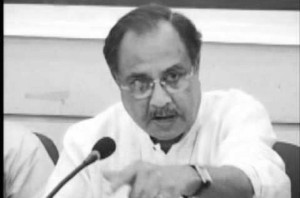
Events on March 7, 1971 dramatized Sheikh Mujib’s political predicament, for he was, at that specific moment, both the personification of a Bengali nation in the midst of a popular rebellion against Pakistan, and also the elected majority leader of Parliament, poised to become Pakistan’s Prime Minister. On March 7, millions of people assembled to hear him at the Ramna Race Course, chanting “Joy Bangla” and waiving lathis to signal their readiness to fight.
In his speech, Sheikh Mujib dwelt at length and in minute detail on his six-point program and on his conditions for joining the National Assembly. Until the Pakistan regime met his conditions, he said, all offices, courts and schools would be closed, and all cooperation with the government, suspended. He directed people to make every home a fortress and to fight with whatever they had ready in hand. He ended his speech by declaring: “This struggle is for emancipation! This struggle is for independence!”
His rousing speech had a double meaning. It evoked two meanings of independence by promoting constitutionalism and a freedom struggle. Despite its ambiguity, however, this landmark speech inspired a popular revolution, whose force and organization came from outside the halls of constitutional politics and quickly commandeered East Pakistani state institutions, as it generated numerous unambiguous declarations of national sovereignty, composed and endorsed by major public figures.
By March 8, non-cooperation had intensified. All remittances to West Pakistan stopped. East Pakistan radio, television and administration obeyed Sheikh Mujib. On March 9, the Chief Justice of the Dhaka High Court refused to administer the oath of office to Tikka Khan. The Students League approved a declaration of independence and invited Sheikh Mujib to form a national government. Maulana Bhashani and Ataur Rahman Khan declared independence at a mass meeting at Paltan Maidan. Bhashani circulated a signed leaflet to explain the meaning of “independence”, which, it said, was complete national sovereignty.
On March 10, Ataur Rahman Khan invited Sheikh Mujib to form an interim Bangladesh government immediately. On March 11, Bengali associations of the East Pakistan Civil Service and Civil Service of Pakistan declared loyalty to Sheikh Mujib. On March 14, the SBKCSP prepared for war, by raising checkpoints in Dhaka to stop military supplies and cargo to West Pakistan. Ataur Rahman Khan again called on Sheikh Mujib to form an interim national government.
On March 15, Yahya Khan arrived in Dhaka with senior generals and officers. The SBKCSP then proclaimed that Bangladesh was already independent, that the Pakistan government had no right to rule, and that Bangladesh would only obey orders from its chosen leader, Sheikh Mujibur Rahman. It invited the citizens of Bangladesh to prepare for armed struggle.
Nevertheless, on March 16, Sheikh Mujib began a dialogue with Yahya Khan, which continued intermittently until March 25. Sheikh Mujib continued to follow the constitutional path, in the midst of a popular revolution led by loyal followers who rallied behind him but also pursued a vision of national sovereignty that swept the nation along another path.
Even as Sheikh Mujib continued his dialogue with Yahya Khan, the popular struggle entered its third week. On March 18, the SBKCSP called on the world community to support Bangladesh’s national independence. On March 19, East Bengal regiments refused to fire on protesters. Fights broke out between East and West Pakistani soldiers at the Gazipur Ordnance Factory and the Joydevpur cantonment. On March 20, Maulana Bhashani held a press conference in Chittagong, where he asked Yahya Khan to form an interim government with Sheikh Mujib as chief, and said that that interim government should decide what relationship independent Bangladesh would have with Pakistan. Pictures of the Bangladesh national flag appeared in newspapers on March 22.
On March 23, 1971, Pakistan Day became a people’s Independence Day in Bangladesh. The SBKCSP led the mass rejection of Pakistan Day and directed all nationalists to fly the Bangladesh flag on homes, offices, and vehicles. At Paltan Maidan, the Joy Bangla Bahini held an independence parade, where SBKCSP leaders received salutes from uniformed platoons, which saluted the national flag and sang the national anthem, “Amar Sonar Bangla”. Led by the SBKCSP, 10 platoons and a Joy Bangla Bahini band paraded to Shiekh Mujib’s house, where they raised the national flag. On March 24, soldiers chanted “Joy Bangla” and saluted the Bangladesh flag at the Jessore headquarters of East Pakistan Rifles.
March 25 was the 25th day of hartal, non-cooperation, demonstrations, mass meetings, and public declarations, which had effectively declared Bangladesh independent. That day, Chittagong port workers and officers refused to unload cargo from the Swat, a ship from Karachi carrying military ordnance. The people of Chittagong raised barricades on major roads to stall Pakistani troops. Yahya Khan and West Pakistani leaders left Dhaka, and at midnight, the Pakistan Army launched a brutal assault.
These events set the stage for official declarations that came to represent the authoritative assertion that Bangladesh had attained national independence and was fighting for sovereignty on the battlefield. Shortly after midnight, on March 26, Sheikh Mujibur Rahman dispatched his aides from his house and awaited arrest by the Pakistan Army. At this time, he reportedly sent this message to East Pakistan Radio:
“This may be my last message. From today, Bangladesh is independent. I call upon the people of Bangladesh wherever you might be and with whatever you have, to resist the army of occupation to the last. Your fight must go on until the last soldier of the Pakistan occupation army is expelled from the soil of Bangladesh and final victory is achieved.”
On March 27, Major Ziaur Rahman of the East Bengal Regiment broadcast this message from the Swadhin Bangla Betarkendra at Kalurghat, Chittagong:
“Major Zia, Provisional Commander-in-Chief of the Bangladesh Liberation Army, hereby proclaims, on behalf of Sheikh Mujibur Rahman, the independence of Bangladesh. I also declare, we have already framed a sovereign, legal government under Sheikh Mujibur Rahman, which pledges to function as per law and the Constitution. The new democratic government is committed to a policy of non-alignment in international relations. It will seek friendship with all nations and strive for international peace. I appeal to all governments to mobilize public opinion in their respective countries against the brutal genocide in Bangladesh. The government under Sheikh Mujibur Rahman is sovereign legal Government of Bangladesh and is entitled to recognition from all democratic nations of the world.”
On March 30, Major Ziaur Rahman appealed again from the Swadhin Bangla Betarkendra to the world community to come to the aid of the struggling people of Bangladesh and end the genocide that Pakistan’s army was committing on innocent civilians. He said: “I once again request the United Nations and the big powers to intervene and physically come to our aid. Delay will mean massacre of additional millions.”
On April 10, the Provisional Government of Bangladesh proclaimed independence with these words:
“We, the elected representatives of the people of Bangladesh, as honor-bound by the mandate given to us by the people of Bangladesh, whose will is supreme, duly constitute ourselves into a Constituent Assembly, and having held mutual consultations, and in order to ensure for the people of Bangladesh equality, human dignity and social justice, declare and constitute Bangladesh to be sovereign People’s Republic, and thereby confirm the declaration of independence already made by Bangabandhu Sheikh Mujibur Rahman, and do hereby affirm and resolve that till such time as a Constitution is framed, Bangabandhu Sheikh Mujibur Rahman shall be the President of the Republic and that Syed Nazrul Islam shall be the Vice-President of the Republic, and that the President shall be the Supreme Commander of all the Armed Forces of the Republic…”
In their contemporary historical context, these official proclamations, issued after March 25, 1971, seem the last, rather than the first, declarations of Bangladesh’s independence. The first declarations appear rather in texts composed by student leaders, who had first called the Bengali nation in East Pakistan “Bangladesh”, a term used previously only in literature, which they had re-coined to symbolize sovereignty.
Rather than politicians, student leaders first declared Bangladesh’s independence. They composed and chanted slogans to proclaim and propagate Bengali nationalism. They captured the popular imagination. Student leaders – like Serajul Alam Khan, said to be the guru of the secret Bengal Liberation Front and the Students League – became the most influential theoreticians of nationhood. The Language Movement and the 1969 mass uprising were the achievements of student leaders.
Yet, students could never achieve their goals alone. They tied their vision of sovereignty to the Awami League’s constitutionalism. They anointed Sheikh Mujib as Bangabandhu and rallied behind him. The SCSP pursued nationalist and socialist ideals that Sheikh Mujib did not share. The growing popularity of nationalist students drove a wide range of politicians to support the Awami League. Sheikh Mujib embraced student activists and even conservatives supported Sheikh Mujib, to protect themselves against radicalism.
A convergence of political interests occurred across the spectrum, from Left to Right, which focused on Sheikh Mujib, whose charisma and authority increased dramatically after the 1969 mass uprising, when his six-point program became the unrivalled centerpiece of East Pakistan’s politics, and he, its unrivalled leader.
In the 1970 elections, East Pakistan voters again declared independence in the context of the military dictatorship by endorsing the vision of parliamentary federalism. As the elected majority leader of the Pakistan National Assembly, and the sole spokesman for the people of East Pakistan, Sheikh Mujib then swore all their elected representatives to a solemn oath at Ramna Race Course, and he planned to restructure Pakistan as a federation of states, along lines similar to those of the Muslim League’s 1940 Lahore Resolution.
Nonetheless, what Maulana Bhashani imagined as possible in 1957 became reality on March 1, 1971, when Yahya Khan cancelled the National Assembly session scheduled for March 3 and realistic possibilities for a federated Pakistan died.
Sheikh Mujib’s famous speech on March 7, 1971, evidently appeared to many in the crowd as a declaration of independence, but many also felt disappointed by its ambiguity. By that point, it seems, the public mood had left the six points behind. After March 14, many political leaders expressed support for the Joy Bangla Ishtehar, and many declared independence. Even old Muslim League stalwarts, such as Khan A. Sabur and Nurul Amin, supported independence. Sheikh Mujib then became the sole spokesman for the six-point federalism. He held talks with Yahya Khan and Bhutto, while the SBKCSP organized people for war and formed sangram parishads around the country.
The declarations of sovereign national independence by students, professionals, bureaucrats, and political and labor organizations before March 25 were no mere rhetoric. The diversity of their idioms made them all the more compelling. All the symbols of independence, paraded publicly before March 25, were later upheld by the Mujibnagar government and incorporated into the Bangladesh Constitution, including the name of the nation, the crowning of Sheikh Mujib as Bangabandhu and father of the nation, the national flag, and the national anthem.
On March 23, 1971, Pakistan Day became a people’s Bangladesh Day, filled with popular declarations of independence. People hoisted the Bangladesh flag around the country and the Joy Bangla Bahini (also called Ganabahini) organized an independence parade at Paltan Maidan, complete with saluting platoons and the national anthem, “Amar Sonar Bangla”. Revolutionary festivities made the vision of independence so tangible then that later, on May 11, M. Yusuf Ali, general secretary of the Awami League, would claim vainly that Bangabandhu had actually declared independence on March 23.
By choosing March 26 as Independence Day, the Mujibnagar government honored the constitutionality of their revolution instead of its popular mandate. In the context of that time, declarations of independence by Sheikh Mujibur Rahman and by Ziaur Rahman, issued on March 26 and 27, reconfirmed an independence declared earlier by students and others. Their two official messages marked the definite end of East Pakistan and the authoritative institution of Bangladesh nationhood.
Rather than being two competing declarations of independence, therefore, the two official statements of March 26 and 27 represent a composite assertion by civil and military authorities that Bangladesh was now an independent nation fighting for its life. This interpretation is strengthened by the fact that Ziaur Rahman evoked the Bangabandu’s authority in his own declaration. Both statements are also united by the fact that they drew meaning and strength from popular declarations that came before and continued to multiply in sacrifice by millions to create an independent Bangladesh.
In conclusion, we must note that historians still do not have all the records they need to understand the freedom struggle and to appreciate the contributions of all its architects, visionaries, beneficiaries and victims. Political parties are justifiably attached to the legacy of their founders, but to recover a full history of independence, scholars need to study all its popular dimensions. The words and deeds of political icons such as Sheikh Mujibur Rahman and Ziaur Rahman played pivotal roles, to be sure, but independence did not originate with them. Bangladesh first became independent in the words and deeds of radical student leaders, who like countless followers and lesser lights in the national struggle, still do not have the place in history they deserve.

